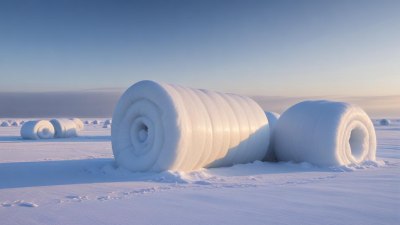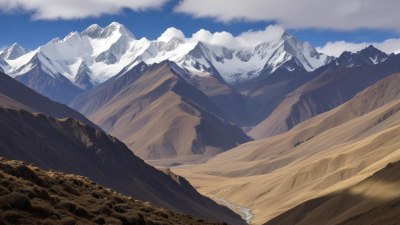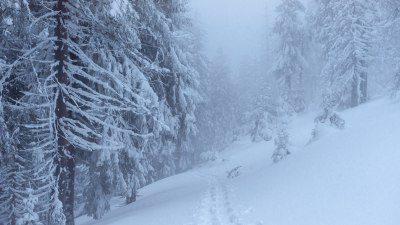What Causes Giant Snow Rollers to Appear on Frozen Fields
Discover the natural phenomenon of giant snow rollers and their formation, science, and stunning appearance.

This image was created with the assistance of Freepik
Nature has a way of surprising us with its extraordinary phenomena, one of which is the occurrence of giant snow rollers on frozen fields. These unusually shaped peculiarities can capture the awe of those who witness them, but understanding their formation requires delving into meteorological processes and environmental conditions. In this article, we will explore what giant snow rollers are, how they form, and the conditions that contribute to their presence on wintry landscapes.
Understanding Giant Snow Rollers
Giant snow rollers are large, cylindrical formations of snow that can be found on cold, frozen fields, especially during winter months. These snow rolls can vary in size, with some being as small as a few inches in diameter while others can reach impressive lengths of several feet. The visual appearance of these snow rollers is striking, resembling enormous snowballs or tumbling snow structures scattered across the landscape.
Formation of Snow Rollers
Snow rollers develop through a unique process involving specific meteorological conditions. Firstly, there must be a layer of snow that meets certain criteria; this snow needs to be moist and dense, forming a base that can support rolling. When new, drier snow falls on top of a well-established snow layer, it creates the perfect scenario for the formation of these towering rollers.
The rolling action begins when strong winds sweep across the surface of the snow-covered ground. When lighter layers of snow are displaced, the underlying wet snow begins to adhere to itself, gaining momentum as it rolls. Wind assists in this process by providing the force needed to nudge the snow along, allowing it to gather more snow as it moves. Over time, this snow accumulates into a larger cylindrical shape.
Optimal Weather Conditions
The development of snow rollers hinges on specific weather conditions. First and foremost, temperatures must be below freezing to ensure that the snow does not melt. However, it is crucial that temperatures remain high enough to prevent the creation of an icy, crusted top layer. Weather professionals often remark that the most favorable conditions for snow rollers to form occur when freshly fallen snow has a density that enables it to easily clump together. In addition to temperature, wind speed plays a pivotal role; brisk winds are essential for pushing snow along the ground, promoting the formation of rollers.
Researchers note that snowrollers are not only dependent on standard weather conditions but also require specific combinations of environmental variables. In essence, a stable base of already fallen snow paired with the right depth and density, along with enough wind, sets the stage for the appearance of these cliffs of snow.
Geographic Distribution
Though giant snow rollers can occur in many snowy regions around the world, they are most commonly reported in areas experiencing dry winter conditions. Places such as North America, Europe, and certain mountain ranges are ideal for observing this phenomenon. These geographical areas typically have the necessary cold temperatures and consistent snowfall patterns that allow the formation of snow rollers. Often, observers find them in open fields, on hillsides, or near river valleys where the wind can freely traverse the terrain.
Snow Rollers vs. Other Snow Forms
While snow rollers attract fascination for their unique appearance, they are not the only type of snow formations found in nature. Other interesting snow phenomena include snowflakes, snowdrifts, and snowbanks, each showcasing different characteristics based on the environmental conditions present during their formation. However, the defining trait of snow rollers is their cylindrical shape and the rolling process that they endure, distinguishing them from other forms.
Impact of Climate Change
As climate change impacts weather patterns globally, scientists are examining how variations in temperature and precipitation may affect the frequency and characteristics of giant snow rollers. Predictions indicate that as winters become milder and more unpredictable due to climate change, conditions conducive to snow roller formation may become less prevalent. Changes to the structure and density of snowfall could potentially hinder the complex processes necessary for creating these phenomena.
Furthermore, shifts in wind patterns could alter the dynamics of how snow accumulates in specific locations, further affecting the potential for giant snow rollers to emerge. These concerns highlight the importance of continued research to better understand the implications of climate change on winter weather events.
Notable Sightings and Observations
Throughout history, there have been numerous accounts of sightings of giant snow rollers across different regions. These snow formations often remain in place until a change in weather such as warmer temperatures or significant wind shifts leads to their disappearance. Some aesthetically appealing photographs have captured the breathtaking beauty of giant snow rollers, sparking interest among photographers and nature enthusiasts who seek to experience the wonder of this peculiar phenomenon firsthand.
In 2018, for instance, an unusual phenomenon occurred in parts of the Midwest United States where residents reported seeing dozens of snow rollers dotting open fields after a strong winter storm. The local news featured coverage of the snow rollers, which drew crowds of curious onlookers and awe-struck children eager to roll their own mini snowballs. Local meteorologists explained the formation process to audiences, emphasizing the rare occurrence and what conditions contributed to the amazing display.
The captivating sight of giant snow rollers serves as a reminder of nature’s complexity and beauty. Understanding the meteorological phenomena that lead to their formation allows us to appreciate not only the beauty of the landscape but also the intricate balance of environmental conditions that contribute to such occurrences. As we face uncertain weather patterns due to climate change, recognizing and studying these phenomena becomes increasingly important. By observing the conditions that support giants of rolling snow, we gain insights into the health of our ecosystem and the delicate interplay between temperature, wind, and snow. In this way, giant snow rollers can teach us more than just the magic of winter—they can help us recognize the precarious relationship between our changing climate and the natural world.











